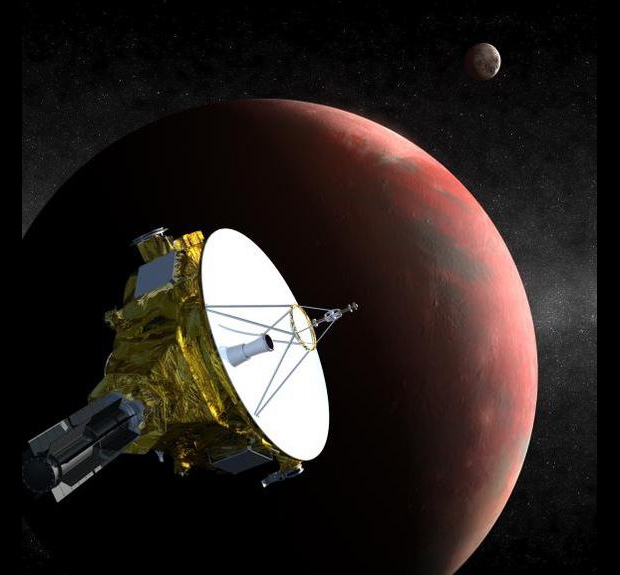'Oh Pluto': Song Celebrates Upcoming Flyby of Dwarf Planet

A NASA spacecraft's epic flyby of Pluto next month now has a soundtrack.
Singer-songwriter Craig Werth has written a song called "Oh Pluto" to highlight and celebrate NASA's New Horizons mission, which will give the world its first up-close looks at the frigid, faraway dwarf planet during a highly anticipated flyby on July 14.
"My thought about the song was to treat Pluto as a friend we've been appreciating from afar and are now coming to visit," Werth told Space.com via email. [Photos of Pluto and Its Moons]
"We've been getting to know Pluto, and now we're coming to introduce ourselves," he added. "Within the song, I was hoping to show the light within us, the best parts of our humanity — the drive within so many of us to learn, to understand, to make positive contributions."
Werth and fellow singer-songwriter Christine Lavin (who, Werth says, came up with the idea for the song) produced an "Oh Pluto" video that features many different people sending their greetings to the dwarf planet. The five-minute video was released on YouTube yesterday (June 23) and has already been viewed more than 3,100 times.
"I couldn't be happier with how the song and video have been received on this first day," Werth said. "The light I hoped to portray seems to be reflecting back and magnifying."
Pluto has remained largely mysterious since its 1930 discovery by American astronomer Clyde Tombaugh. The dwarf planet's relatively small size and immense distance from the sun — 40 times greater than the sun-Earth distance, on average — make Pluto very difficult to study from Earth.
Breaking space news, the latest updates on rocket launches, skywatching events and more!
But New Horizons is about to lift the veil on Pluto and its five known moons. During next month's close encounter, the probe will zoom within just 7,800 miles (12,500 kilometers) of the dwarf planet's surface. The spacecraft will return supersharp images and gather a variety of data that should help researchers better understand the Pluto system and other frigid worlds in the outer reaches of the solar system.
The flyby won't bring an end to the $700 million New Horizons mission. The probe will continue beaming data home for a year or more after the close encounter, and mission team members have proposed sending New Horizons on to study another object in the Kuiper Belt, the ring of objects beyond Neptune's orbit.
If NASA approves and funds this extended mission, the flyby of a second Kuiper Belt object would likely occur in 2019, New Horizons team members have said.
You can watch the "Oh Pluto" video on YouTube: https://www.youtube.com/watch?v=ALrHiQnkcpc&feature=youtu.be
Follow Mike Wall on Twitter @michaeldwall and Google+. Follow us @Spacedotcom, Facebook or Google+. Originally published on Space.com.

Michael Wall is a Senior Space Writer with Space.com and joined the team in 2010. He primarily covers exoplanets, spaceflight and military space, but has been known to dabble in the space art beat. His book about the search for alien life, "Out There," was published on Nov. 13, 2018. Before becoming a science writer, Michael worked as a herpetologist and wildlife biologist. He has a Ph.D. in evolutionary biology from the University of Sydney, Australia, a bachelor's degree from the University of Arizona, and a graduate certificate in science writing from the University of California, Santa Cruz. To find out what his latest project is, you can follow Michael on Twitter.

